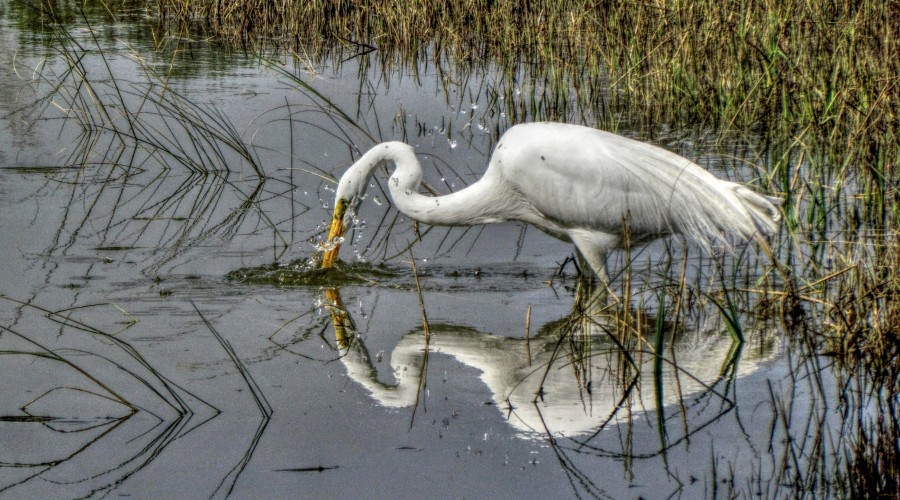Arcata Marsh is a year-round destination for nature observers. Situated along the Pacific Flyway, it is on a major migratory route for thousands of birds that breed in the far north and winter in California, Mexico, and Central and South America. It provides homes and migratory resting places for over 330 species of birds. Many plants, mammals, insects, and amphibians inhabit the Marsh, including river otters, gray foxes, raccoons, Pacific tree frogs and red-legged frogs, rough-skinned newts, and dragonflies.
The Marsh is considered the best place to bird in Humboldt County and is widely known outside the area. Each season reveals its own delights.
Winter
Mallards, shovelers, pintails, ring-necked ducks, and wigeons often remain over winter. Rails may be pushed out of hiding by high tides. Scoters and buffleheads swim past shorebirds blanketing islands in Klopp Lake. Kinglets flit through trees along the paths, while night-herons are easily seen roosting in leafless willows around the Log Pond.
Spring
Swallows, martins, and swifts return, swooping over the marshes for insects. Rufous and Allen’s hummingbirds vie with resident Anna’s for red-flowering currant nectar. Tree frogs chirp loudly.
Summer
River otter families may be glimpsed in or near Marsh water bodies. Wrens, blackbirds, and sparrows sing from the cattails. Watch for broods of mallards, cinnamon teal, and wood ducks. Dragonflies and swallowtail butterflies fill the air. Brown pelicans dive into Klopp Lake for a meal and garter snakes sun themselves along the paths.
Fall
Peregrine falcons, harriers, hawks, and kites are readily seen. With luck, one can spot an osprey or even a bald eagle! Cedar waxwing flocks visit to feast on berry bushes. Fall color shows up in salt marshes, as pickleweed turns red. Purple asters bloom alongside white Queen Anne’s lace. Watch for migrating warblers, shorebirds, and waterfowl.
Resources
You will find 327 of the 330-plus birds seen at the Arcata Marsh in the Arcata Marsh & Wildlife Sanctuary Bird Checklist. Other lists you may want to download are: the Arcata Marsh & Sanctuary Checklist of Common Animals and Plants; a checklist for kids, grades K-3, called What Can YOU Find at the Arcata Marsh & Wildlife Sanctuary?; and 100 Common and/or Conspicuous Plants of the Arcata Marsh & Wildlife Sanctuary.








